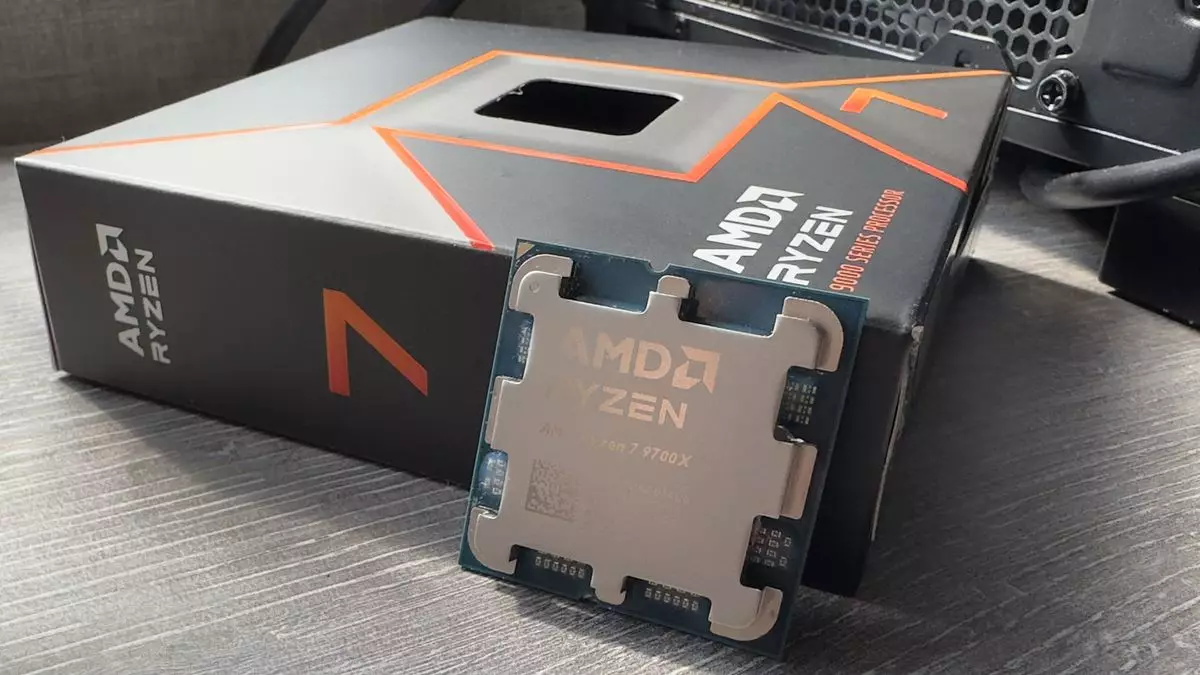As the semiconductor industry continues to evolve, major players like AMD (Advanced Micro Devices) are beginning to utilize domestic manufacturing capabilities to bolster their product lines. Recently, credible reports indicated that AMD’s latest Ryzen 9000-series desktop CPUs are in production at TSMC’s (Taiwan Semiconductor Manufacturing Company) new fabrication facility located in Arizona. This development, spearheaded by journalists like Tim Cuplan based in Taipei, raises numerous questions about the implications for both AMD and the semiconductor landscape in the U.S.
AMD’s Ryzen 9000 series has garnered attention since its introduction, especially with the incorporation of 4nm silicon technology, which exemplifies advanced engineering in the field. The decision to shift some portion of this production to Arizona underscores a significant strategic pivot towards reducing reliance on offshore manufacturing. AMD’s choice to work with TSMC is not merely an act of patriotism; it is indicative of a growing trend where companies are seeking to reserve supply chains within the U.S. for greater resilience against global disruptions.
However, as commendable as this may seem, it is essential to maintain a critical lens when examining the practicality and implications of this shift. Notably, TSMC has acknowledged that the cost of manufacturing chips in Arizona surpasses that of its Taiwanese counterparts. This brings us to a critical junction: While the localized production fulfills certain strategic objectives, the higher manufacturing costs may lead to increased prices for consumers.
Another notable aspect of the Ryzen 9000 CPUs is their chiplet design architecture. AMD employs this innovative approach to enhance performance while optimizing production efficiency. While some of these 8-core CPU dies will be crafted in Arizona, the accompanying 6nm I/O die—integral for memory management—remains under production in Taiwan. This bifurcation raises questions about the scope of American-made products and the real meaning behind “Made in America.”
Assembling a microprocessor involves numerous components, each potentially produced in different regions. Hence, while certain elements of the Ryzen CPUs may be developed in the U.S., the overarching system cannot firmly lay claim to being entirely domestically manufactured. This complicates the narrative surrounding patriotism and local manufacturing, emphasizing the intricate global supply chain that characterizes the semiconductor industry.
TSMC’s new fabs in Arizona—FAB 21-1 already operational, and FAB 21-2 and FAB 21-3 on the horizon—represent a massive investment into the American tech ecosystem. FAB 21-1 focuses on producing chips on the 4nm node, akin to the Ryzen 9000 series, while the upcoming fabs aim for even smaller nodes, including 3nm and 2nm technologies. However, it is crucial to note that TSMC intends to reserve its most cutting-edge technologies for its Taiwanese facilities for the time being. This raises an intriguing point: While American facilities are making strides, they may not be aligned with the mastery of technology seen in Taiwan.
Moreover, the road to operational success of these Arizona fabs faces hurdles. As AMD and other companies like NVIDIA look towards incorporating these chips into their product lines, they will have to navigate the complexities of balancing costs associated with local production with market expectations.
As AMD progresses into the world of domestic manufacturing, the industry will undoubtedly watch closely to see the outcomes of these pioneering initiatives. The pursuit of American-made chips is not simply a matter of geographic pride; it embodies broader themes of supply chain security, technological innovation, and economic strategy. In five years, we may witness a transformed landscape where the relationship between cost and domestic production has been recalibrated.
Ultimately, while AMD’s investment in TSMC’s Arizona factory heralds a promising future for U.S. semiconductor manufacturing, it also opens up discussions about the realities of production costs, supply chain complexities, and the evolving requirements for performance-driven economies. As the semiconductor battleground continues to unfold, stakeholders must remain vigilant and adaptive, strategizing for a future where the balance of international trade and domestic production is ever more critical.

